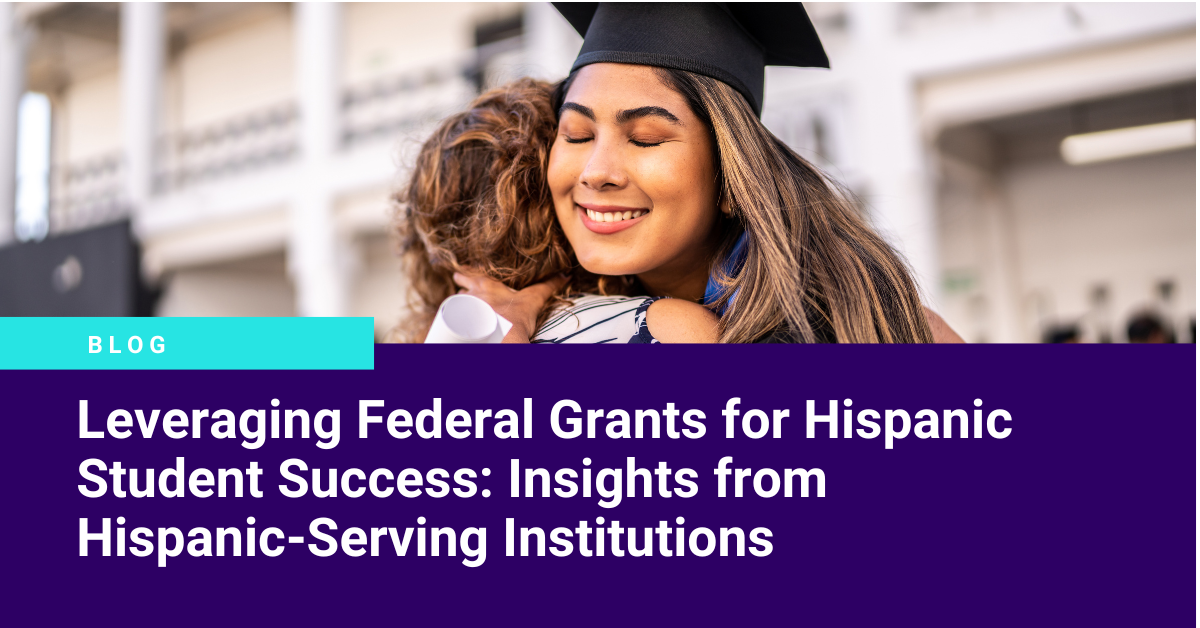By Salma Reyes, Director, Partner Success
Hispanic and Latino students account for about 20% of all enrollment in US colleges and universities, a number that underscores the importance of supporting their educational journeys.With over 550 colleges and universities designated as Hispanic-serving institutions (HSIs), there’s a concerted effort to provide additional support for these students. Organizations like the Southern Regional Education Board (SREB) and the Hispanic Association of Colleges and Universities (HACU) play a vital role in bolstering the efforts of HSIs and minority-serving institutions.
Within the Acadeum network, there are over 65 HSIs, and they showcase a commitment to fostering an inclusive and supportive learning environment for students. Consortia like the SREB HBCU-MSI Course Sharing Consortium, which includes members from both historically Black colleges and universities (HBCUs) and HSIs, further amplify collaborative efforts to enhance student outcomes.
The US Department of Education offers three discretionary grants to support Hispanic-serving institutions, including the Developing Hispanic-Serving Institutions (DHSI) Program; the HSI Science, Technology, Engineering, or Mathematics (HSI STEM) Articulation Program; and Promoting Postbaccalaureate Opportunities for Hispanic Americans (PPOHA) Program.
Federal grants play a pivotal role in advancing the mission of HSIs. These grants aim to expand educational opportunities, improve academic attainment, and increase the number of Hispanic and low-income students earning degrees. Institutions like Mount Saint Mary’s University, Woodbury University, Pima Community College, and Calumet College of St. Joseph have all utilized grant funding to enhance student success and ensure students receive the assistance they need to thrive. Read more to learn how each institution is utilizing federal grants to enhance the attainment of Hispanic students.
Collaboration Increases Impact
A notable example of collaboration between HSIs is the shared MBA program launched by Mount Saint Mary’s University and Woodbury University. Mount Saint Mary’s University received a Title V grant to implement the innovative partnership with Woodbury University. In order to have expertise, higher education institutions must hire expertise. However, with a partnership and program share, Mount Saint Mary’s expertise in program management and Woodbury’s concentrations in finance and accounting combine to benefit each other.
Program sharing through the Acadeum network offers institutions a low-risk way to enrich educational experiences on campus by integrating courses from regionally accredited partner institutions and vetted in-demand workforce certification partners to launch or enhance in-demand programs, concentrations, or minors. Universities like Mount Saint Mary’s and Woodbury can leverage program sharing to give their students more concentration options, and program sharing streamlines the process for the universities to note a concentration on a student’s transcript. They don’t have to hire another faculty member or offer courses for a limited number of students.
Dr. Baidwan of Mount Saint Mary’s says the partnership “makes a compelling argument for why transitioning into a collaborator mindset is one of the best ways for HSIs to become more resilient and persistent.” By leveraging their respective strengths, these institutions have expanded access to high-demand programs and provided students with increased opportunities for success.
Pima Community College (PCC) was awarded a Title V grant for HSI students. PimaOnline’s STRIVEOnline grant support online students with tools and resources aligned with Pima’s strategic goals for success among diverse learners. It provides resources for personnel supporting students, virtual spaces fostering student belongingness, and faculty support for course development.
The grant bolsters the embedded online coaching program by offering success coaches in developmental education courses, expanding over five years. It fosters student belongingness through a virtual success center and peer mentoring platform, creating a virtual campus community.
Additionally, it will renovate the PimaOnline media lab with cutting-edge equipment, establishing a hub for high-quality and efficient video production across stages—pre-production, production, and post-production. This initiative opens up pioneering avenues for PCC faculty to effectively engage and educate online learners.
Over the next five years, the college hopes to see their success rates with both Hispanic students and other ethnicities increase. They are looking to measure successes in degree completions, increasing student success rates, making sure students meet credit hours to remain eligible for the Pell grant.
HSIs require a certain number of students to have federal aid and if PCC finds that students are missing a course or missing a few hours, it presents an opportunity for them to tap into the network and leverage a consortial course. PCC joined the SREB consortium over three years ago, and they are offering inclusive access to course work that encompasses most of the academic areas that institutions want.
In 2000,Calumet College of St. Josephbecame the first university in Indiana to receive HSI designation, and in 2021, they received a grant to enhance access, achievement, and assessment for students in STEM. The college received an additional grant that helps fund several initiatives, including outreach to area high schools and partnerships with local industries, which results in more career opportunities for graduates.
As a smaller school, the campus relies on teamwork and a dedicated grant manager to ensure they are utilizing each grant to best serve students. The team takes a collaborative approach so that advising and career services are working in connection with different academic departments to boost student success.
Pathways Forward
By working with over 475 institutions, the Acadeum network helps facilitate institutional interconnectedness and support some of these larger initiatives and objectives at each institution. By utilizing a network, institutions like Mount Saint Mary’s University, Woodbury University, Pima Community College, and Calumet College of St. Joseph found alignment between their shared strategic goals and student support.
As institutions continue to navigate the changing landscape of higher education, the focus remains on equity, access, and student success. Leveraging federal grants can help institutions achieve these goals. Through strategic initiatives, collaborative partnerships, and innovative solutions, HSIs are making significant strides in advancing the educational attainment of Hispanic students and fostering an inclusive learning environment for all.



